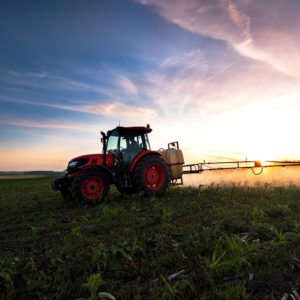Editor’s Note: For an alternative viewpoint, please see: Point: More Farm Subsidies Won’t Help the Rural Economy
We call it the “farm bill,” but Congress’ coming efforts to provide nutrition programs and farm security in the United States should lead to an array of programs that will benefit all Americans, not just farmers. It’s in all of our interests to make sure it does.
Consider that nearly 80 percent of the farm bill budget is devoted to the Supplemental Nutrition Assistance Program and other direct food assistance initiatives. The majority of the spending on these nutrition assistance programs goes into urban areas, but the same programs serve a vital need in rural America as well. Today, about 43 million citizens receive such aid. It’s a success story that most Americans support.
Farm safety net programs are indispensable in any year, but especially so this year, when commodity prices have plunged well below the cost of production in many markets. The weather, meanwhile, has brutalized farmers from Colorado to North Carolina and beyond. Congress needs to work deliberately and carefully to make sure it renews the bill’s provisions before a new iteration of this landmark legislation comes due next year.
Something else many people simply don’t know: The farm bill, while a safety net, is hardly a guarantee that farmers will stay in business. Nearly all farm safety-net programs have abandoned guaranteed payments and income levels and replaced them with programs that provide insurance for a fee or payments that make up only part of farm losses. Farmers can and do lose money — even to the point of selling everything they have to survive.
Farming is no ordinary business. Returns on investment are pitiful — less than 2 percent, according to the USDA. Put another way, many farmers earn less than they could have if they simply sold everything and bought Treasury Notes from the government — even at today’s interest rates.
It gets worse from there. Extreme weather, pests and disease threaten their livelihoods, while competition or barriers to trade in other markets further squeeze whatever profits are available. Under such circumstances, the farm bill provides the majority of risk management support for farmers by providing them the option to purchase insurance to cover potential losses. The farmer must suffer a significant loss — on average about 25 percent — to receive any benefit.
Like anyone else in private business, no individual farm owner is assured an income, but the importance of food security and other benefits agriculture provides mean the public is asked to share some of the risk.
Consumers reap serious benefits from this set of programs that comprise well under 1 percent of the federal budget. The retail price of food in the United States is far below that paid by residents in most foreign nations: According to USDA, the average household in this country spends less than 10 percent of its income for food each year. And 40 percent of that is for eating out. At least some of the credit for that small of a bill is due to the various safety net and risk management programs.
But farmers provide more than food. They are important caretakers of the land. They maintain greenspace, wildlife habitat and freshwater recharge areas throughout our nation, and since 1981, the farm bill has compensated them for that, rather than forcing them to reduce their families’ incomes. For the past dozen years, conservation spending has been in the $5 billion to $6 billion range. While overall conservation program funding is on an upward trend, there is a clear trend away from programs that simply remove land from cultivation to others that emphasize doing the best things we can with the land we work. These programs target parts of a field instead of moving entire farms out of production.
Voluntary conservation practices have worked, and worked well. Field to Market, a broad-based alliance of grower, environmental and agribusiness organizations, has documented the enormous progress achieved since the first conservation programs started in the 1981 farm bill. Corn — the nation’s biggest crop — uses 41 percent less land per bushel produced than it did in 1980. Likewise, soil loss on a per-bushel basis is down 58 percent, irrigation water use has fallen 46 percent and energy use is down 41 percent. Greenhouse gas emissions have fallen 31 percent. Similar numbers — some higher, some lower — hold for barley, cotton, soybeans, rice, sugar beets and wheat, too. These represent nearly all of the major row crops and more than 225 million acres of land.
Stories like these are too often lost in the shuffle by a press already stretched thin by everything else it has to do. But farmers and ranchers will continue to do the right thing, just the same. It’s their land after all, and anything that compromises it means serious harm to the farmer’s ability to make a living over the long haul.
For more than 60 years, farm bills — let’s call them food bills — have provided a safety net for citizens in need, for children, for domestic food production and for natural resource protection. The farm bill’s safety net helps farmers achieve success across the board, and enhanced care for the environment is among its primary goals. The next “food” bill should to continue that trend.

